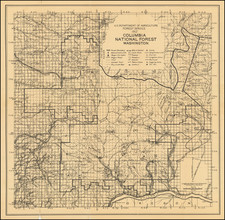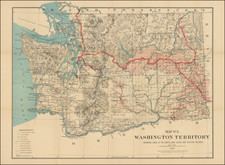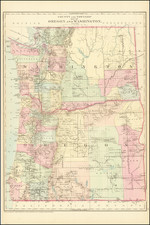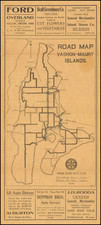A handsome example of George Cram's first map of Washington Territory, issued in his rare railroad atlases in the 1870s, having been first issued in 1875.
The map includes several counties east of the Cascades. The results of the earliest township surveys are shown.
George Cram would become one of the most prolific atlas publishers of the late 19th and early 20th centuries. His earliest maps, issued in the late 1860s, were marvelous separately issued railroad maps. His success led to the publication of two editions of his now very rare New Commercial Atlas of the United States in 1875 and 1879 (and 1878?), which included several of Cram's rare separately issued railroad maps.
This is among the rarest of all maps of Washington Territory to appear in a commercial atlas.
George F. Cram (1842-1928), or George Franklin Cram, was an American mapmaker and businessman. During the Civil War, Cram served under General William Tecumseh Sherman and participated in his March to the Sea. His letters of that time are now important sources for historians of the Civil War. In 1867, Cram and his uncle, Rufus Blanchard, began the company known by their names in Evanston, Illinois.
Two years later, Cram became sole proprietor and the company was henceforth known as George F. Cram Co. Specializing in atlases, Cram was one of the first American companies to publish a world atlas. One of their most famous products was the Unrivaled Atlas of the World, in print from the 1880s to the 1950s.
Cram died in 1928, seven years after he had merged the business with that of a customer, E.A. Peterson. The new company still bore Cram’s name. Four years later, the Cram Company began to make globes, a branch of the business that would continue until 2012, when the company ceased to operate. For the final several decades of the company’s existence it was controlled by the Douthit family, who sold it just before the company was shuttered.









![[ Whidby Island, Washington ] Penn Cove Park: your homesite on Whidby Island. . . [with five printed photos of Whidby Island streets including four aerial shots].](https://storage.googleapis.com/raremaps/img/small/98838.jpg)


![[San Francisco to British Columbia] Carta particolare dello stretto di Iezo fra l'America e I'Isola Iezo . . . D'America Carta XXXIII](https://storage.googleapis.com/raremaps/img/small/67788.jpg)

